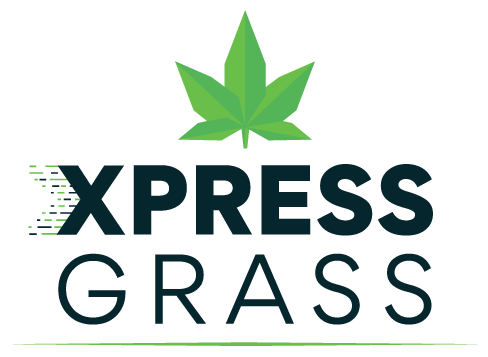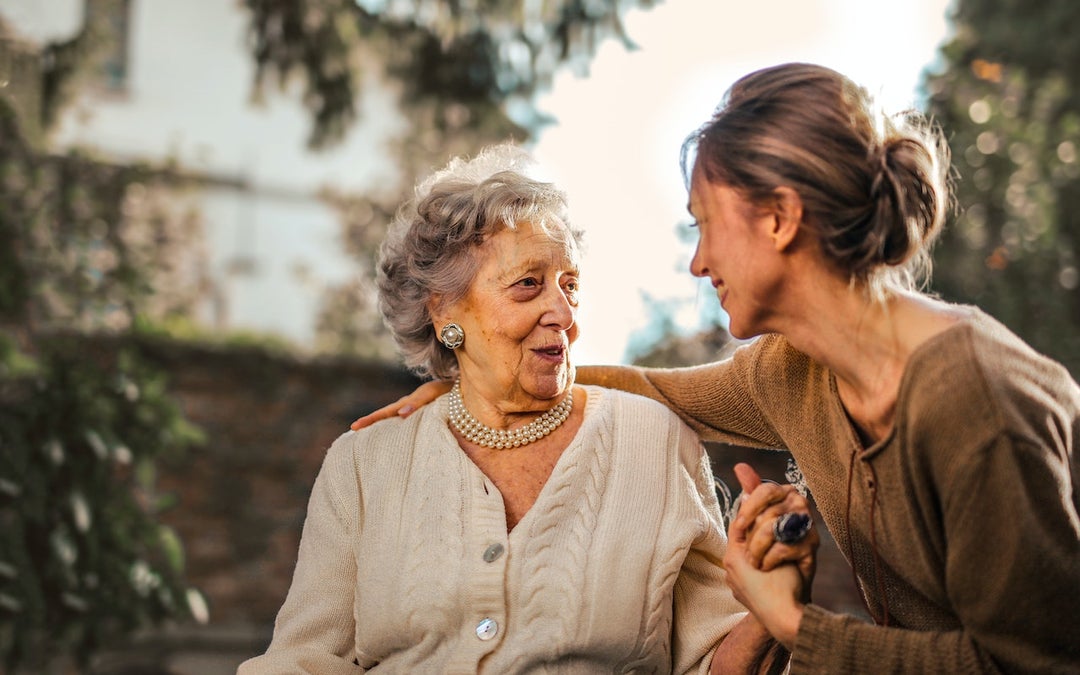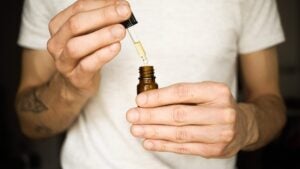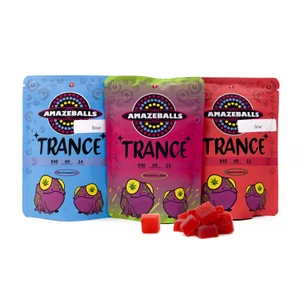Table of Contents
- What Is Osteoporosis?
- Osteoporosis Symptoms and Causes
- How Does CBD Oil Help with Treating Osteoporosis?
- What Are the Benefits of Using CBD Oil?
- What Is the Best Dosage for Osteoporosis?
- Final Thoughts
- FAQ
Ah, the age-old question: “How much CBD oil should I take for osteoporosis?” It’s a popular inquiry among those looking for natural ways to maintain bone health. However, nailing down the perfect dosage can be quite a challenge. There are several variables to consider, including your weight, age, and the severity of your osteoporosis.
For best results, it’s a good idea to start with a small amount of CBD and slowly increase it until you feel it’s working. However, users tend to get the most benefits from taking between 10 mg and 100 mg of CBD oil every day.
In this post, we’ll go over everything you need to know about CBD oil and osteoporosis, including how it works and what the best dosage is. So, let’s get started and uncover the natural healing power of CBD oil!
What Is Osteoporosis?
Osteoporosis is not the most fun topic to talk about. It’s a condition that affects bone health, caused by low bone mass (osteopenia) and deterioration of the bone structure. It leads to an increased risk of fracture, pain, and even disability.
This disease can occur in anyone due to aging or certain medical conditions, but it’s more common among postmenopausal women and older people. More specifically, about 20% of women and 5% of men aged 50 and up have osteoporosis, according to the CDC or Centers for Disease Control and Prevention.
Also, the International Osteoporosis Foundation reports that an estimated 75 million people across Europe, the USA, and Japan suffer from this debilitating condition. And 1/10 of all women over the age of 60, or an estimated 200 million women worldwide, are thought to be affected.
Osteoporosis Symptoms and Causes
This silent disease can be asymptomatic for many years, which means that people may not know they have the condition until they experience a fracture or break a bone. When your bones are compromised by bone loss, you may experience early signs such as:
- Low grip strength – Researchers looked at postmenopausal women in a study from 2018 and found a link between low bone mineral density (BMD) and weak handgrip strength. It’s worth noting that having weaker grip strength could increase the likelihood of falling.
- Fragile fingernails – Did you know that the strength and brittleness of your nails can indicate bone health? But don’t worry, it’s not just about that! Other factors to consider are how often you expose your nails to chemicals and tools like polish remover or acrylic nails. And if you thought water was always good for your nails, think again! Prolonged exposure to water and extreme temperatures can actually weaken them.
- Receding gums – Bone loss in the jaw can lead to gum recession, exposing the sensitive roots and causing discomfort. This is especially true when the jawbone loses density. Luckily, your dentist can assist you in preventing further damage.
But once bone mass has decreased, you may start to notice more obvious signs or symptoms of osteoporosis, which include:
- Persistent neck pain or back pain
- Height loss
- Stooping posture
- Frequent bone fractures
Having said that, just because you’re getting older, it doesn’t mean you’re destined to develop osteoporosis. Sure, age is a risk factor, but it’s not the only one. Other factors can also make you more susceptible to this condition, such as:
- Hyperthyroidism
- Certain medications (watch out for those cortisone shots)
- Hormonal changes (hello, menopause!)
- Not getting enough of certain nutrients in your diet
- Not exercising enough
- Low vitamin D and calcium levels
- A history of osteoporosis in the family
- Low body weight and small body frame
But here’s the good news: By taking steps to address these risk factors, you can significantly reduce your chances of developing osteoporosis. So don’t write it off as an inevitable part of aging just yet!
Note: If you suspect that you may be at risk of developing osteoporosis or if you’re exhibiting symptoms, consult with your doctor. They will likely recommend a bone density test, which is a type of X-ray that measures bone density at various points throughout the body.
This test can provide valuable information to help diagnose osteoporosis and develop an effective treatment plan. So, don’t hesitate to speak with your doctor and prioritize your bone health.
How Does CBD Oil Help with Treating Osteoporosis?
The endocannabinoid system is the target of CBD oil’s therapeutic effects. Cannabinoid receptors — CB1 and CB2 — found in bone tissues are receptors crucial for maintaining strong and healthy bones.
In particular, CB2 receptors are expressed in osteoclasts and osteoblasts, which respectively break down and form bones. When these cells are in balance, they work together to keep our bones in tip-top shape. However, as we age, this balance can become disrupted, which can lead to bone fractures and a decrease in bone density.
But guess what? There’s actually a solution to this problem. CB2 agonists, like CBD, can help to regulate how these receptors work, which promotes the formation of endocortical bones and helps to prevent bone loss. It’s also crucial to note that activating CB1 receptors can mess with your bone health by interfering with neurotransmitter release.
But the cool thing is that recent studies have found that CBD oil can actually have a positive effect on those receptors. This means we might be able to slow down the progression of osteoporosis and make the symptoms feel a little better.
What Are the Benefits of Using CBD Oil?
1. Low-Risk and Non-Addictive Treatment
While bisphosphonates may be considered the gold standard of osteoporosis treatment, they’re not always effective. And unfortunately, bone loss can still occur even after taking them for several years. If you’re seeking a more relaxed, stress-free option instead of bisphosphonates or other prescribed medications, you can try cannabidiol (CBD).
Not only is CBD a fantastic alternative, but it’s also low-risk and non-addictive. What’s more, there’s scientific evidence backing the use of CBD oil as a potent solution for slowing or even reversing the bone loss that often comes with osteoporosis.
2. Entourage Effect
Throughout numerous studies over the years, CBD oil, as well as other CBD products, have been proven to be really helpful in treating osteoporosis. How? Well, first, they can negatively modulate both CB2 and CB1 receptors, which basically means they stop compounds from activating these receptors. This is called the “entourage effect,” and it helps reduce the effects of other compounds that target the same cannabinoid receptors.
3. CBD Inhibits the FAAH Enzyme
FAAH is an enzyme that breaks down a natural chemical in the body called anandamide, which plays a role in bone metabolism. By inhibiting FAAH, CBD can help to increase the levels of anandamide in the body, which could potentially have a positive effect on bone health.
All of these effects put together mean that CBD is super effective at reducing the risks of bone problems and promoting overall health.
What Is the Best Dosage for Osteoporosis?
The dosage can vary greatly depending on the severity of the condition. To get the best results, start with a small dose and gradually increase it until you achieve the desired outcome. CBD experts Leinow and Birnbaum say that most people do best with a standard daily dose of CBD between 10 mg and 100 mg.
How Many Doses of CBD Should I Take a Day?
To reap the benefits of CBD, it is recommended to take 10 to 15 mg doses twice a day (with or without meals). Alternatively, you may choose to consume a single dose of 20 to 30 mg per day.
How Long Does 10mg of CBD Stay in Your System?
If you’re wondering how much time a particular medication lingers in your system, assessing its half-life is the way to go. How long the body takes to get rid of half of a drug is called its “half-life.” When it comes to CBD, the half-life is not fixed and fluctuates depending on the mode of administration.
If you’re using CBD as a sublingual spray, you can expect it to stay in your system for anywhere from 1.4 to almost 11 hours. When you swallow it, the drug takes a bit longer to leave your system, with an estimated half-life of 2-5 days.
If you’re receiving CBD through an intravenous injection, the half-life is approximately 24 hours. But if you prefer to smoke it, expect the half-life to be around 31 hours.
Is 100mg of CBD Oil Too Much?
The key to determining the right dose of any medication is to find one that provides a therapeutic benefit without causing adverse side effects. Clinical studies on CBD have utilized different oral doses, ranging from 100 mg up to 800 mg per day, with some even exceeding these limits.
Final Thoughts
Finding the right CBD oil dosage for osteoporosis can be a journey, but with careful consideration and guidance, it can be a valuable addition to your management plan. In most cases, users get the most benefit from CBD oil when they take between 10 and 100 mg per day. But remember, always start with a low dosage, track your progress, and speak with your healthcare provider before starting a CBD regimen.
If you’re ready to kick osteoporosis to the curb and experience the potential benefits of CBD oil, we’ve got you covered! If you sign up today, we’re throwing in a sweet $10 credit towards your first purchase. And for those of you who are already members, make sure to check out our daily specials! Trust us; you don’t want to miss out!
FAQ
Does CBD oil help with bone density?
Although CBD is well-known to help ease pain, more research is still needed to confirm that it can help improve bone density and overall bone health.
Can CBD cure osteoporosis?
People with osteoporosis may benefit from CBD oil’s pain-relieving properties, but it can’t cure the disease.
Does CBD affect calcium levels?
According to studies, yes, it does. Researchers have figured out how CBD works inside brain cells. CBD interacts with cell powerhouses called the mitochondria. Such interaction helps maintain calcium levels and cell function, reducing cell damage.
How much CBD Oil should I take for effect?
If you don’t have a recommended dosage from your doctor, start low and increase the dose slowly. You can start with 20–40 mg each day, and then after a week, try adding 5 mg more. Continue with the dosage until your symptoms improve.
What is the difference between 500mg and 1000mg CBD oil?
Assuming that both CBD oil bottles have the same amount of liquid, a 1,000-mg bottle of CBD oil is twice as powerful as a 500-mg bottle.
Sources:
CDC – Does Osteoporosis Run in Your Family? https://www.cdc.gov/genomics/disease/osteoporosis.htm
International Osteoporosis Foundation – Facts & Statistics https://www.osteoporosis.foundation/facts-statistics
Orthop Surg – Low Grip Strength is a Strong Risk Factor of Osteoporosis in Postmenopausal Women https://www.ncbi.nlm.nih.gov/pmc/articles/PMC6594500/
Mol Pharmacol – CB2 Cannabinoid Receptors as a Therapeutic Target — What Does the Future Hold? https://www.ncbi.nlm.nih.gov/pmc/articles/PMC4164977/
Curr Med Chem – Endocannabinoid Binding to the Cannabinoid Receptors: What Is Known and What Remains Unknown https://www.ncbi.nlm.nih.gov/pmc/articles/PMC4120766/
Br J Pharmacol – The diverse CB1 and CB2 receptor pharmacology of three plant cannabinoids: Δ9-tetrahydrocannabinol, cannabidiol and Δ9-tetrahydrocannabivarin https://www.ncbi.nlm.nih.gov/pmc/articles/PMC2219532/
CBD: A Patient’s Guide to Medicinal Cannabis – Healing without the High https://books.google.com.ph/books?id=u3zcDQAAQBAJ&printsec=frontcover&source=gbs_ge_summary_r&cad=0#v=onepage&q&f=false






